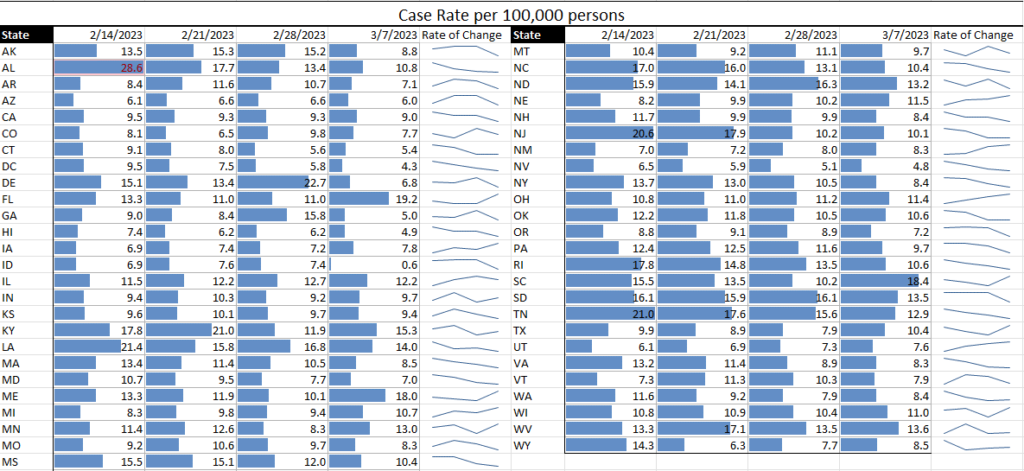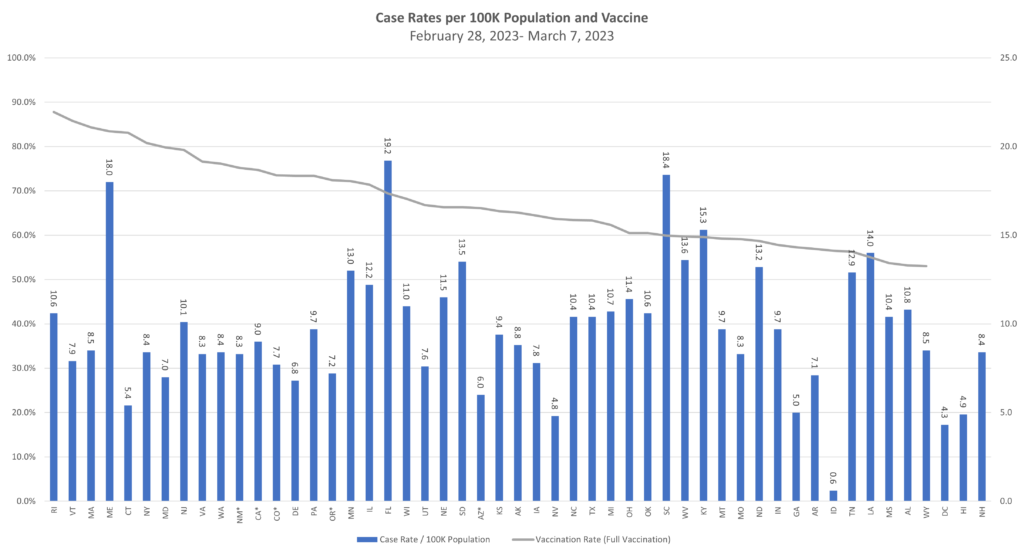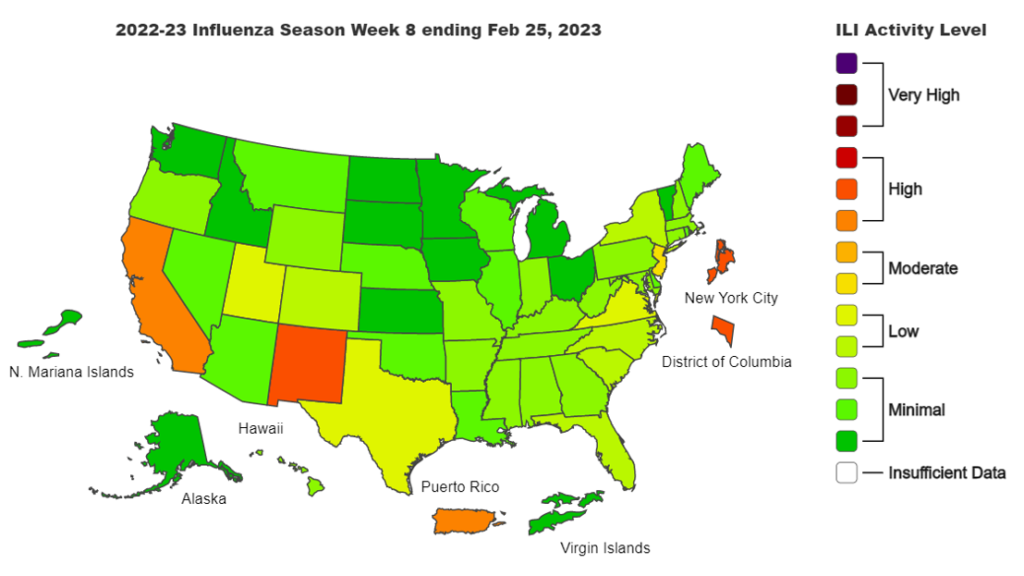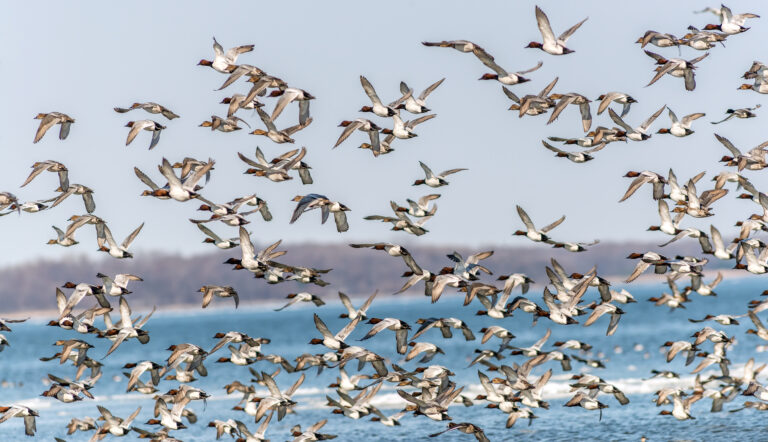The approach of spring brings with it the semiannual migration of wild birds which is, once again, raising predictions of avian influenza (AI) spread to poultry and fear of its spread to humans. The recent concerns are due primarily to the outbreaks of the last two years which affected nearly 59 million poultry in the U.S., reports of highly pathogenic avian influenza (HPAI) occurring in wild mammals, and the 2022 detection of AI in two asymptomatic poultry farm workers in Spain.
Although AI can and does spread to humans, the risk is primarily to those in prolonged contact with infected poultry or wild birds or with environments and surfaces contaminated by their feces, such as farm workers. Additionally, while the disease can be very virulent in birds, infected humans generally experience only minor or no symptoms, although in rare cases, it can cause serious illness or even death. There have, however, been no cases of person-to-person transmission of avian flu and CDC considers the current risk to the general public from the H5N1 bird flu outbreak in wild birds and poultry to be low.
While the first known cases of avian influenza in poultry date back to 1878 in Italy (CDC), the first outbreak of human infection wasn’t observed until 1997 in Hong Kong (NIH). Since then, outbreaks have been reported in different parts of the world, but it remains primarily an avian disease.
Because of this, and the upcoming migration of wild birds – that may carry AI asymptomatically, we could anticipate a renewed impact on poultry, thereby again impacting egg production and causing supply chain disruptions as well. Because of this, there is talk of poultry AI vaccinations. As reported in the New York Times, USDA has begun “testing potential poultry vaccines and initiated discussions with industry leaders about a large-scale bird flu vaccination program for poultry, which would be a first for the United States.” Similar action has taken place in the EU with the European Commission harmonizing rules to allow for the vaccination of poultry against HPAI, in alignment with the international standards developed by the World Organisation for Animal Health (WOAH).
With all this, TAG’s top recommendation is that those who are in regular, particularly prolonged, contact with poultry and/or wild birds take preventive steps such as avoiding unprotected contact with sick birds, wearing protective equipment, washing hands, and being aware of symptoms, sources of transmission, etc. For more information on AI, visit TAG’s Infectious Disease webpage and download the Avian Influenza Fact Sheet.
COVID Risk Matrix:



Influenza:


- Influenza.
- A Japanese health ministry expert panel approved on Feb. 27 the manufacture and sale of an intranasal influenza vaccine (FluMist) aimed at children aged 2 to 18. This is the first such approval in Japan. These types of vaccines have been approved in 30 other countries including the US.
- India is experiencing a surge in cases and in response, in Chennai, “fever camps” are being organized for people with fever and cough to be examined and medicines will be provided as needed.
-
- Flu cases are rising in China with numbers up 78% over 2019 cases. Public health officials are warning residents to continue vigilance to prevent the occurrence of influenza and common infectious diseases in key places such as schools and childcare institutions.
- COVID. A recently published study looks at whether viral genetic material extracted from rapid antigen tests could be used for genetic analysis and characterization of the strains. They found that the test strip in Ag-RDTs is suited to preserve viral genomic material, even for several months at room temperature, and therefore can serve as source material for genetic characterization and could help improve global coverage of genomic surveillance for SARS-CoV-2 as well as for other viruses.
- Canadians that fall into the immunocompromised adults or seniors category are recommended to receive the COVID-19 booster this spring. The recommendation comes from the National Advisory Committee on Immunization (NACI). Bivalent, Omicron-containing, mRNA-based COVID-19 vaccines are preferred.
- Measles.
- A case of measles has been reported in an unvaccinated Kentucky resident linked to an event at Asbury University. This marks the third measles case in a little more than three months.
- In six provinces in South Africa, cases have risen past 600, a tally which cites this as SA’s worst outbreak in more than a decade.
- Norovirus. In the UK, cases of norovirus have been surging in recent weeks, with hundreds of hospital beds filled by people with symptoms, figures show. Laboratory reports of norovirus are more than double the five-season average before the coronavirus pandemic, according to the UK Health Security Agency. Most cases are in residents over 65 in care home settings.
- Strep A. Group A streptococci, also known as “strep A”, has been on the rise around the world with a new strain reported in the United Kingdom and Europe. This variant has been linked with surges of scarlet fever and a marked increase in life-threatening invasive strep A infections. Cases have been identified in Australia for the first time.
- TB. A reminder that India accounts for a quarter (about 27%) of the global TB burden. It is believed that one of the major hurdles to effective control is lack of awareness among the general population.
- Polio. 4 cases of polio have been detected in children in Israel.





